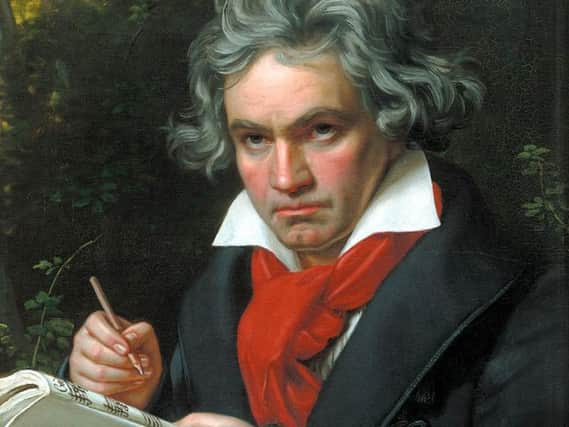Classical Chat: Beethoven the master of drama


Beethoven is one of the most important figures in classical music, who occupies the key turning point between the Classical and Romantic.
Related: He's Bach at the pinnacle of musicIn short, this means he leaves behind the ordered world of formality and courts and embarks on music as a drama full of the writer’s inner psychology and thoughts.
Advertisement
Hide AdAdvertisement
Hide AdCompared to previous composers’ music Beethoven’s is often fiery, filled with struggle and the sense of a quest or a journey.
There is very little repose or calm in this music, and in his later years he created some of the most radical and disconcerting works we know.
His output is pretty enormous and most of it is worth hearing, but here are a few obvious places to start out:
Symphony No.5. Der-der-der-derrrrr! Probably the most famous introduction in classical music. Just listen to the surging power of the themes Beethoven creates from it in this intricately-woven half-hour of genius.
Advertisement
Hide AdAdvertisement
Hide AdSymphony No.6. (The Pastoral). A depiction of the Austrian countryside, this is much more placid but still unmistakably by Beethoven. It overflows with gorgeous melodies too, particularly the slow movement and the final hymn.
Piano Concerto No.5. (The Emperor). The concerto would never again be a series of delicate exchanges between soloist and orchestra following this torrent of notes that puts the piano and ensemble in a thrilling conflict which is resolved at the very end.
Piano Sonata No.23. (The Appassionata). One of the most famous of his 32 piano sonatas, this opens with a climb from the abyss and ends 25 minutes later in a driving finale where the quiet parts in between the torrential outbursts of notes seem to hold their breath.
String Quartet No.13. This six-movement marathon ends with the Great Fugue, a 20-minute piece so dissonant and difficult it still baffles some listeners today. The aching cavatina was placed on the Voyager spacecraft to indicate human capabilities.